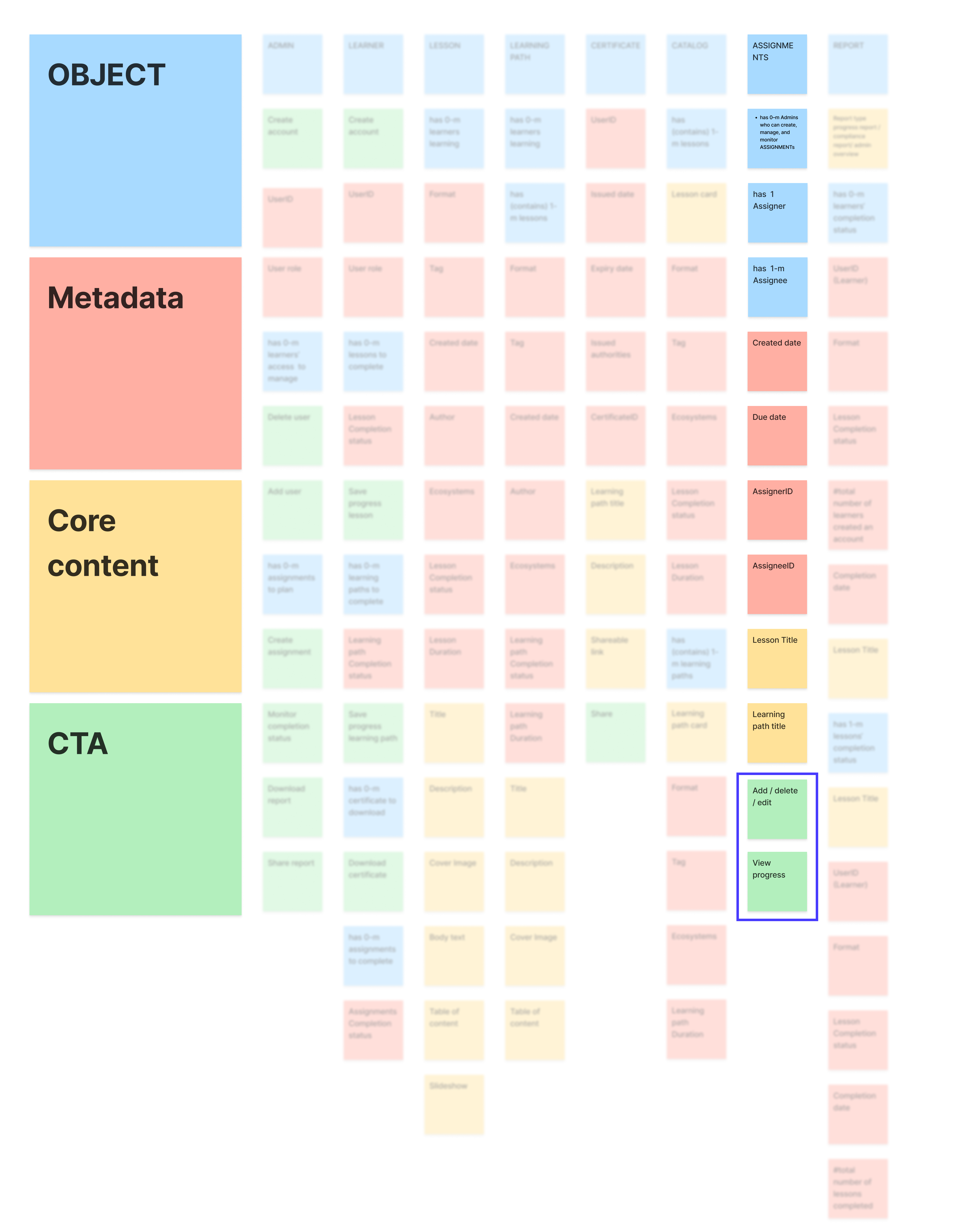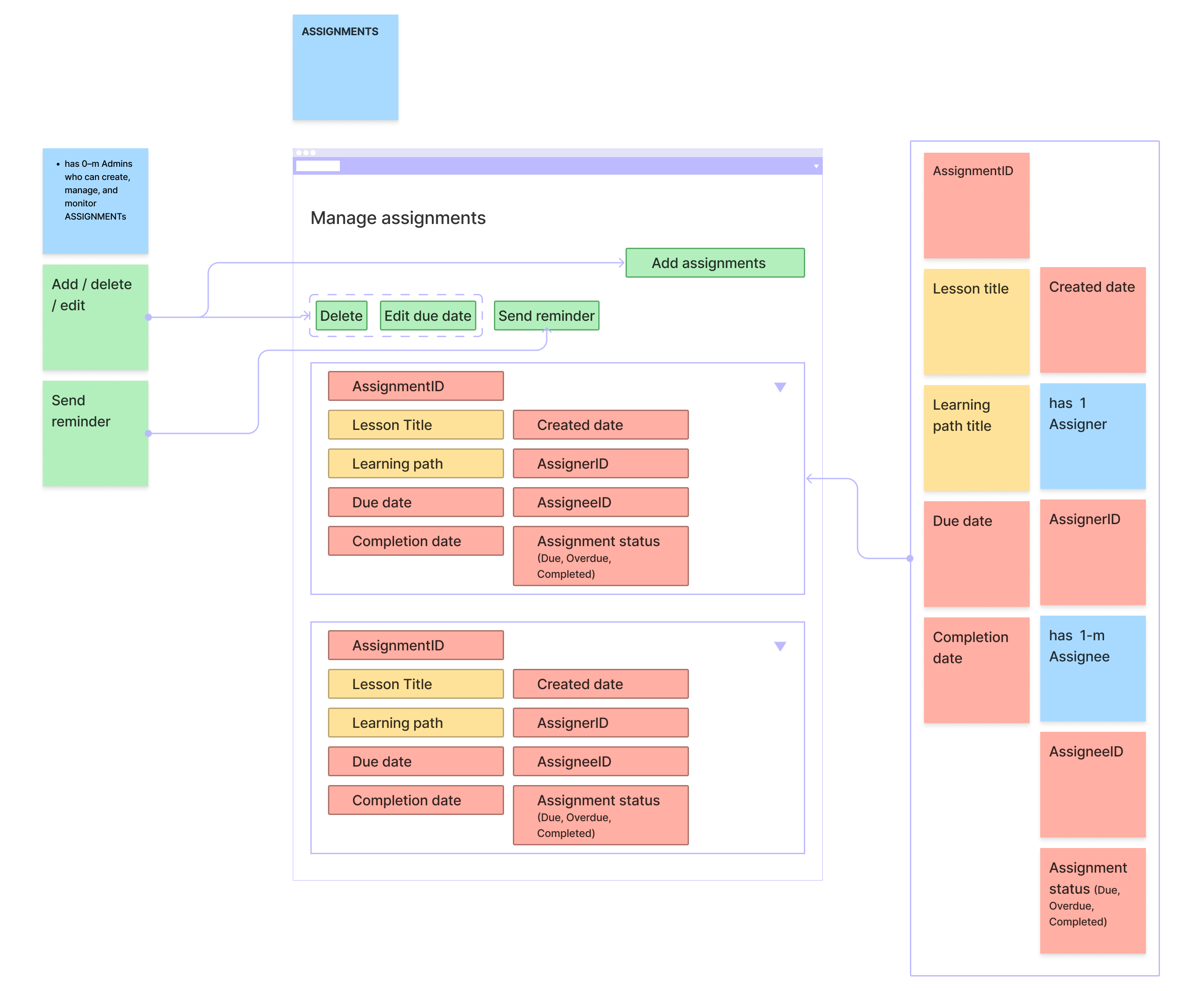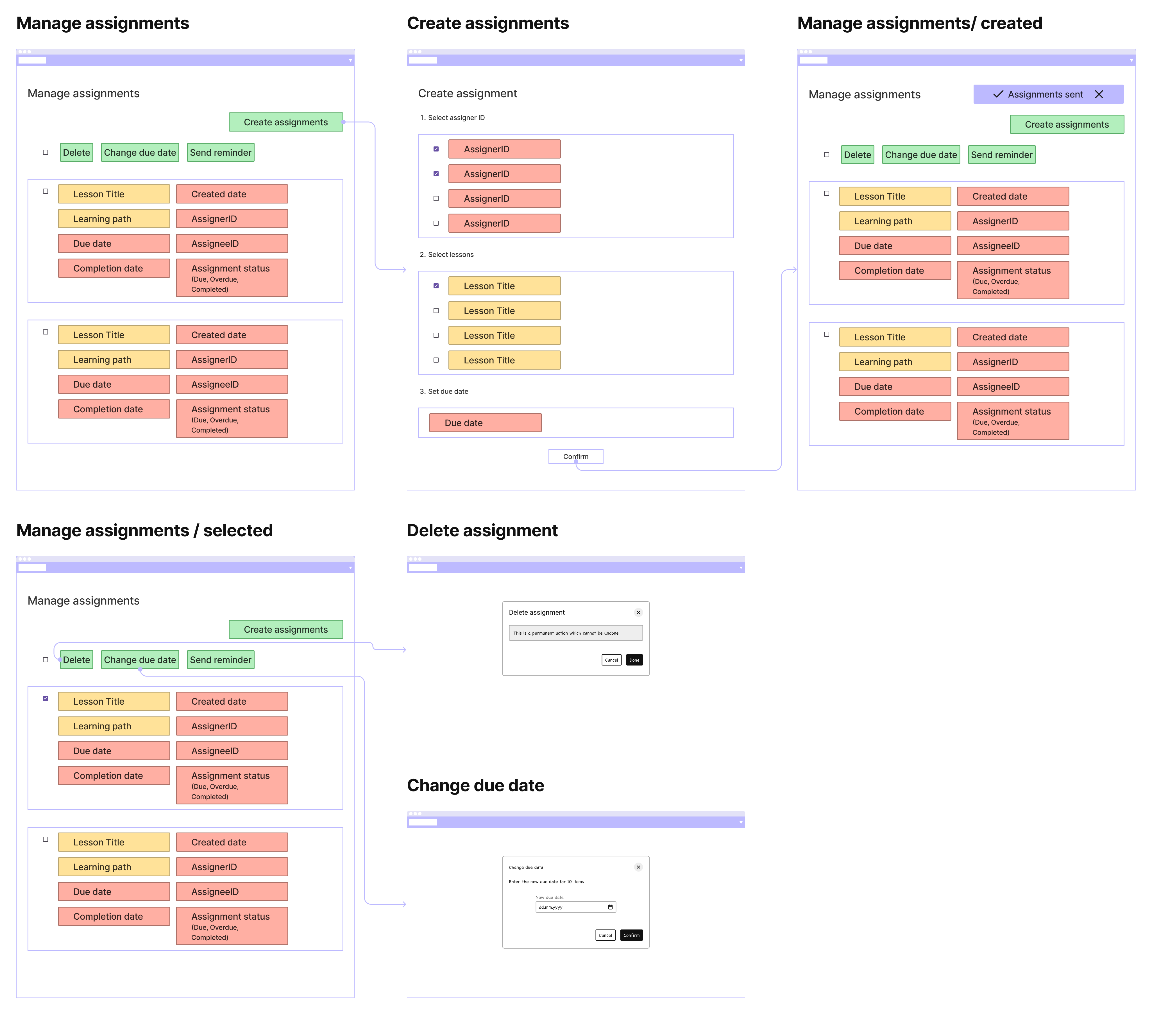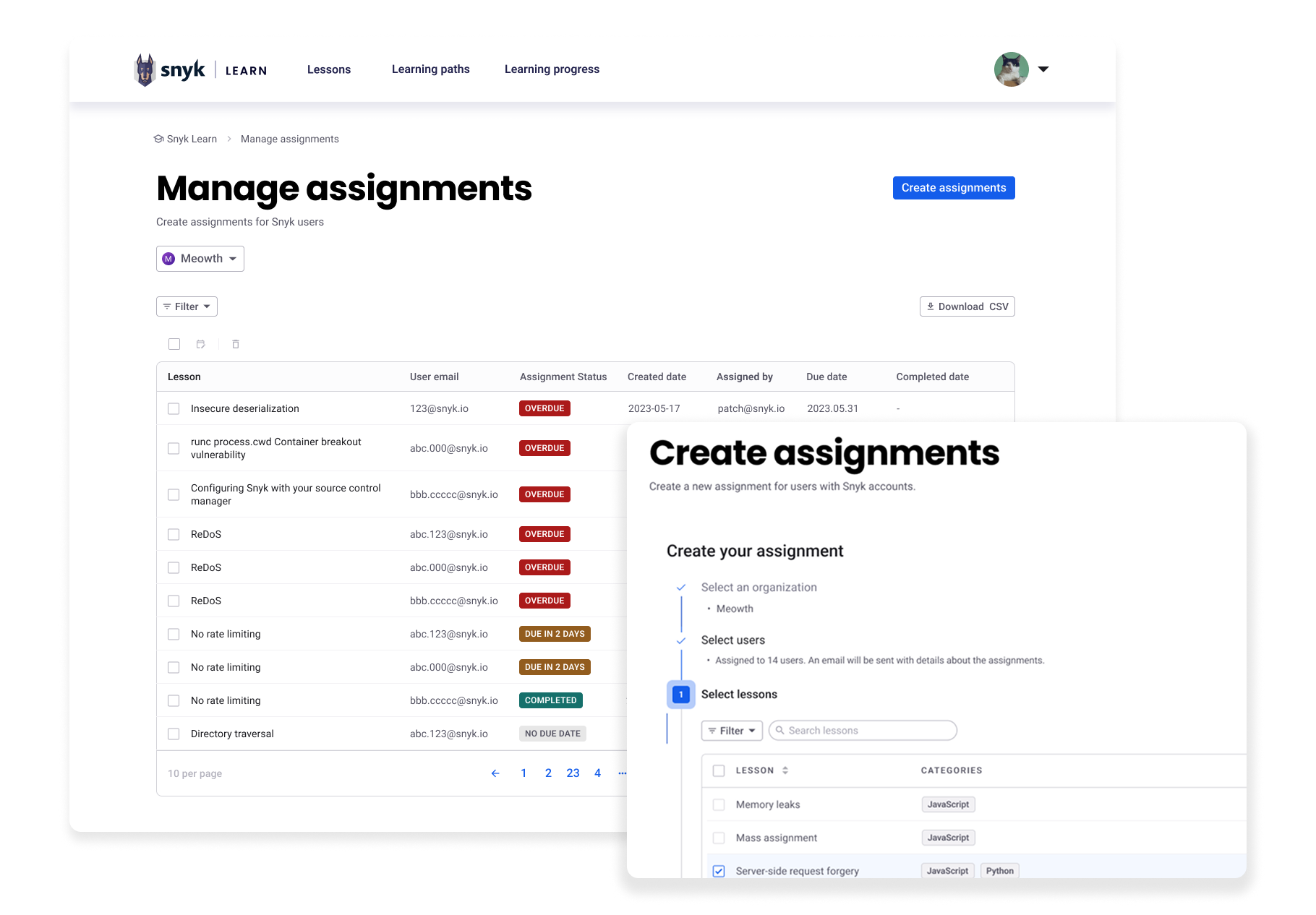Problem
Enterprise customers had no scalable way to assign, track, or measure secure-code learning.
Outcome
Delivered a scalable enterprise feature that enabled secure-code learning across teams and accelerated enterprise adoption.
The Snyk Learn platform later won a Silver Award at the 2025 Anthem Awards for Responsible Technology — highlighting both the business impact and the product’s value in advancing developer education.
My contribution
I identified key behavioural patterns from customer calls that revealed how AppSec teams were struggling to manage hundreds of developers. These insights reshaped the product direction and focus on building scalable of Assignments.
From pattern to Jobs-to-be-Done (JTBD)
From customer research, we learned that:
• One AppSec manager often supports hundreds of developers, they needed a scalable, low-maintenance way to assign lessons.
• Progress was invisible across teams, they needed clear tracking, completion states, and nudges before due dates.
• Enterprise customers required compliance evidence ,they needed reliable documentation of who completed what, and when.
These insights informed the core JTBD:

Figure 1: AppSec Persona JTBD







